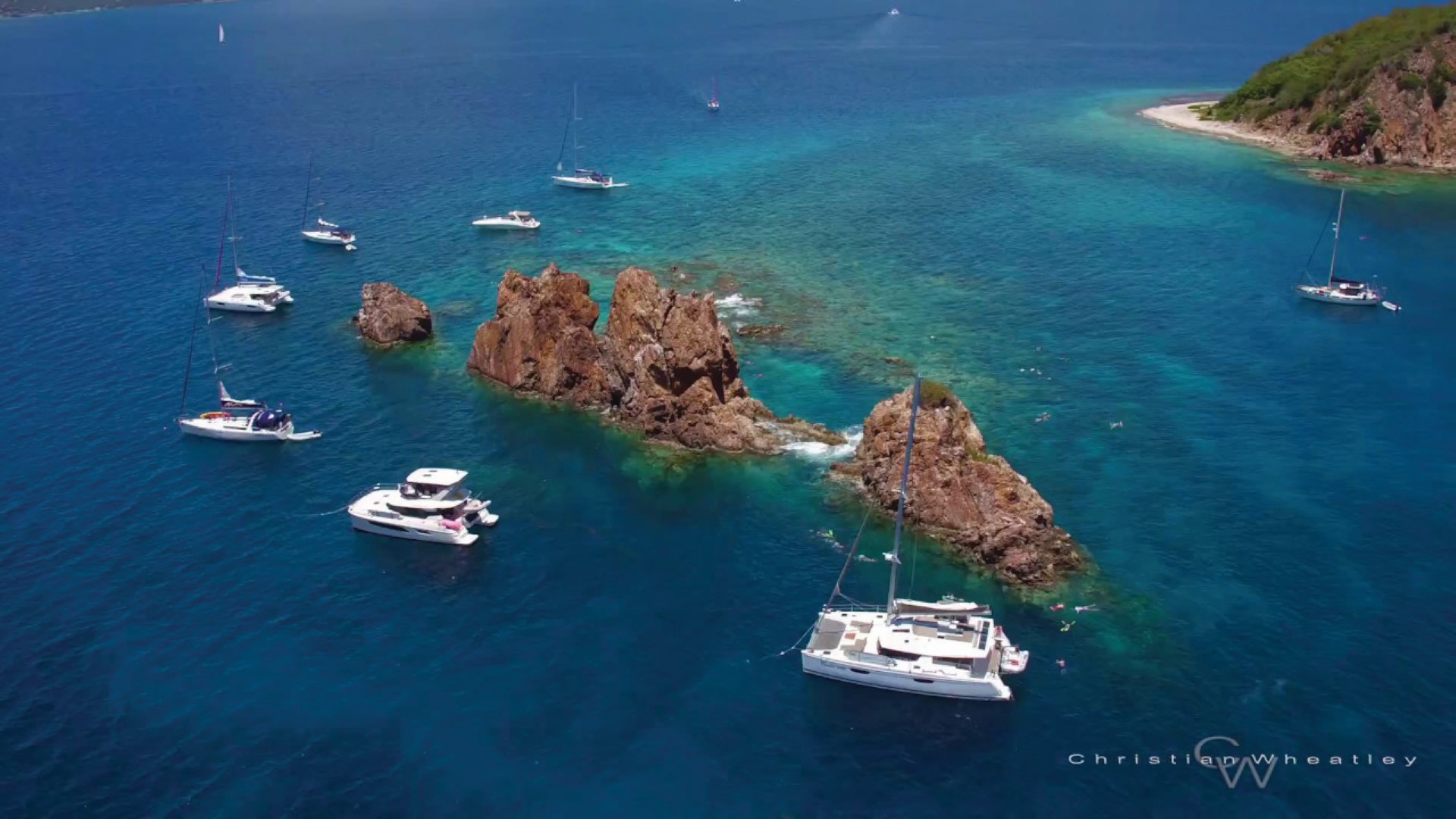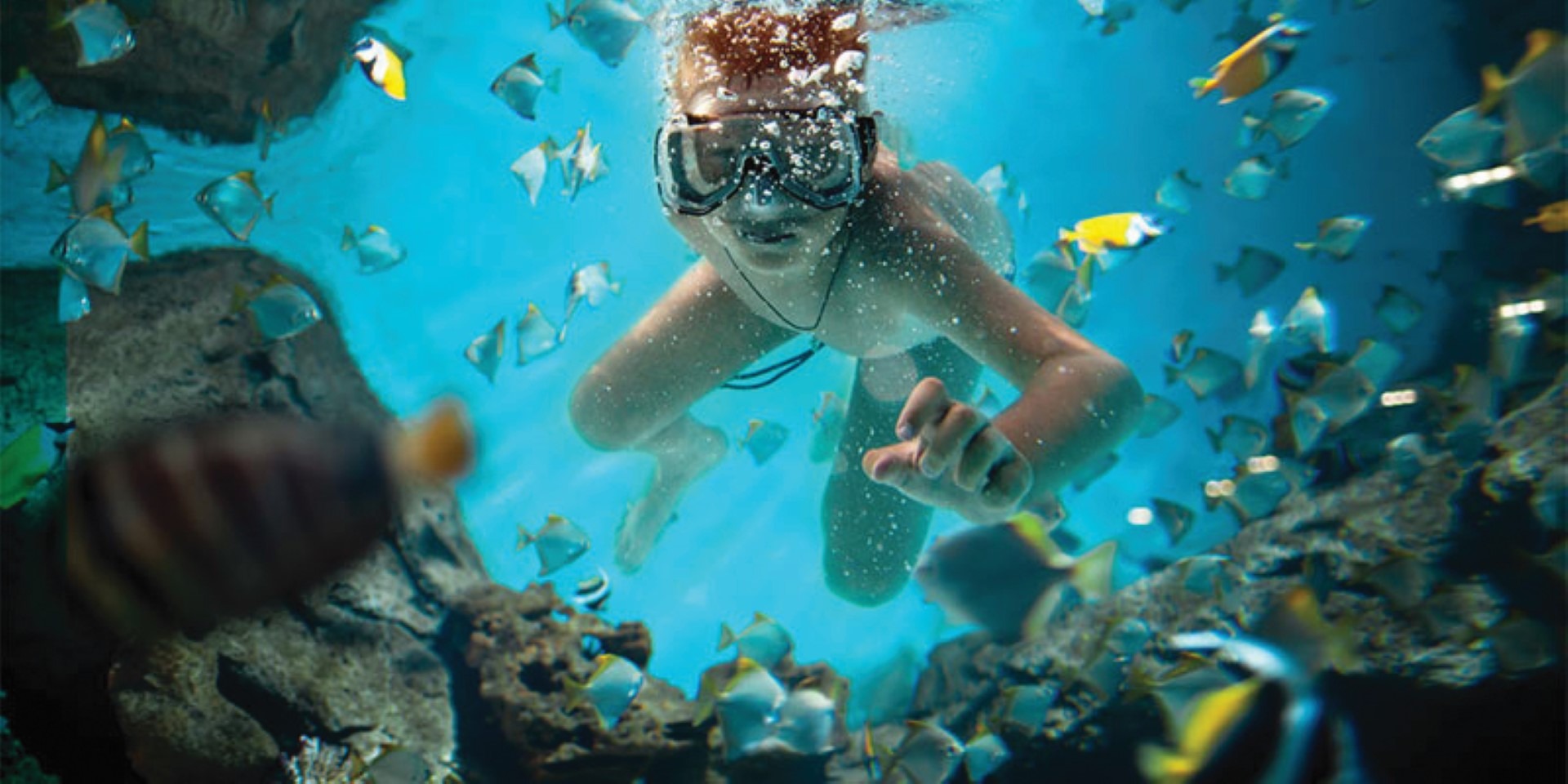Share
In the sparkling sapphire waters of the British Virgin Islands, there is a captivating archipelago known as The Indians. The Indians stand as one of the most popular dive sites in the British Virgin Islands, second only to the legendary wreck of the RMS Rhone. It stands out with its four majestic pinnacles rising dramatically from the ocean floor.
This enchanting place is not only a visual spectacle but also one of the best snorkeling and diving spots in the entire region.
Just half a mile north of Norman Island, the beauty of The Indians from top to bottom, is breath-taking. Above the water, these rocky formations are a sight to behold from its 50-foot sandy bottom. From a distance, these four rocky pinnacles are said to resemble a Native American chief’s headdress, earning them their name.
The Indians offers an alluring appeal to snorkelers. The shallower side of the rocks serves as a popular snorkeling spot, offering mooring opportunities for boats seeking refuge in the shelter of Pelican Island. The crystal blue depths of The Indians are ideal, providing an opportunity to swim amongst a vibrant dance of blue chromis, creole wrasse, angel fish, jelly fish, and numerous other colorful fish and marine wildlife. With four-day moorings available on the west side of the rocks, visitors have the chance to immerse themselves in the vibrant underwater world; however, caution is necessary, as surface currents in the area demand attention.

It is also a perfect diving spot. Here, corals and gorgonians paint the rocky formations, creating a stunning display. Nestled among the pinnacles are a small tunnel and a cave, creating unique underwater features that divers can’t resist exploring. The lavish corals and sponges add a burst of color, contrasting against the rocky ledges and steep walls that reach towards the surface.
It is one of those sites with many passageways, that will leave you yearning to wonder what is around the next corner. A large cave, filled with Glassy Sweepers, awaits on the east side of the rocks. Its crystal-clear waters are also host to a kaleidoscope of other marine life, with vibrant coral reefs beckoning divers in, with its array of colors. From parrotfish to angelfish, and even clownfish, the region’s tropical fish species mesmerize divers. Sea turtles including hawksbills and graceful rays add to the allure, creating unforgettable encounters beneath the waves. A saddle between two of the pinnacles allows access to a broad, shallow pool, serving as an invitation to divers to follow the arched swim-throughs that eventually will lead them back to where they began.

As the sun streaks its rays across the swells, it creates mesmerizing photo opportunities that can hardly be resisted. The Indians are not simply admired for their natural beauty. They also hold historical significance, inspiring the classic novel Treasure Island by Robert Louis Stevenson. These caves and the surrounding marine life found within their depths leave a lasting impression on sailors and storytellers alike. The wrecks of old ships, now vibrant artificial reefs, embrace a diversity of marine life, showcasing the historical legacy of the British Virgin Islands.
While the dive and snorkeling sites of The Indians are popular, they are also carefully protected. The BVI National Parks Trust installs over 120 moorings throughout the area, ensuring the fragile ecosystem remains preserved. Preserving the reefs and pristine marine environment is a priority in the British Virgin Islands. The fragility of the reefs is a reminder of the impact of pollution, and efforts are made to educate visitors about the harmful effects of plastic and chemical-laden sunscreens. Respect for the underwater world is paramount. We urge that you consider preparations to dive carefully to protect yourself and protect your diving environment, so that it will be sustainable for many years to come.
When exploring the underwater wonders of the British Virgin Islands, it is important to consider the best time to dive. The dry season, from December to May, offers clearer skies and minimal rainfall, providing optimal underwater visibility and safer diving conditions. During these months, calm seas facilitate smooth boat travel to diving sites, while warm water temperatures welcome divers without the need for thick wetsuits. Arrange with a local dive center to explore this underwater adventure who will advise you on what would be required to enjoy an unforgettable afternoon with the Indians.



